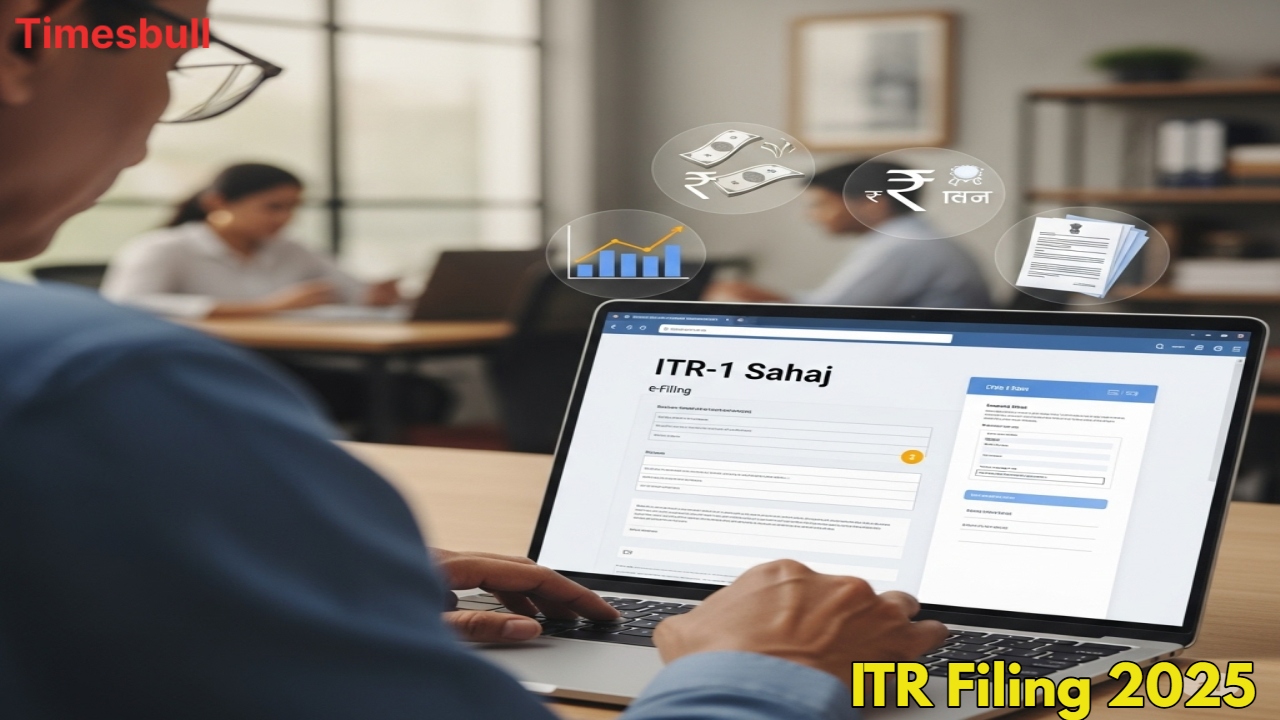The process of filing Income Tax Return (ITR) for the financial year 2024-25, i.e., Assessment Year 2025-26, is in full swing. Keeping in mind the convenience of taxpayers, the Income Tax Department has extended the last date for filing ITR from July 31 to September 15, 2025, at the end of May 2025. This time, the department has also made several technical improvements to make the ITR form more user-friendly.
ITR-1, also known as ‘Sahaj Form’, is for those taxpayers whose sources of income are direct and limited, such as salary, pension, or bank interest. In this article, we will know in detail who can fill out ITR-1, for whom this form is not valid, what documents will be required, and the step-by-step process to fill it out online. Before filing ITR, let us understand what this ‘Sahaj Form’ is.
What is ITR-1 (Sahaj Form)
ITR-1 is a simple, one-page form designed for individuals who earn limited income, such as salary, pension, or interest. You can fill this form if your total annual income is ₹50 lakh or less.

You can file ITR-1 if your income comes from these sources:
From one or more employers.
If you own a house from which you receive rent, or live in it yourself (and no house property loss has been carried forward).
Interest from savings account, fixed deposit, or post office.
Long-term capital gains from equity shares or mutual funds under section 112A
If the income of your spouse or minor children also falls within these limits, you can add their income to your income.
Important Note: To make the ITR valid, it is mandatory to link your Aadhaar with PAN. Without this, your ITR will not be valid.
Who cannot fill out ITR-1
If your income or financial status falls under any of the conditions given below, then you cannot fill out ITR-1:
Your total income is more than ₹ 50 lakh.
You are a director of a company, or you have unlisted shares.
You are an NRI or RNOR (Resident Not Ordinarily Resident).
Your income comes from these sources:

Income from two or more houses.
Income from lottery, horse racing, betting, etc.
Capital gain or loss of more than ₹ 1.25 lakh.
Agricultural income of more than ₹ 5,000.
Income from a business or freelance profession.
Property or bank account abroad.
Deferred tax on ESOP (employee stock option plan).
Income from crypto or virtual digital assets.
TDS deducted under section 194N (such as on excess cash withdrawal from an ATM).
If you fall into these categories, you must fill out ITR-2, ITR-3, or another appropriate ITR form.
What are the new changes in ITR-1 (AY 2025-26) this year

The Income Tax Department has made some important changes in the ITR-1 form this time, making it more accurate and user-friendly:
Now you can also show LTCG up to ₹ 1.25 lakh in ITR-1. Earlier, it was mandatory to fill out ITR-2 for this. This is a big relief for those small investors.
You will now get a dropdown menu to choose exemptions from sections 80C to 80U, making it easier to fill in the information.
A new section has been added under section 89A, which is for information related to foreign retirement accounts.
Now, only a valid 12-digit Aadhaar number will be valid; Aadhaar enrolment ID has been removed.
It will now be mandatory to tell under which section your TDS has been deducted. This will increase transparency.
Documents required to fill ITR-1
Before filing ITR-1, keep all these documents ready with you, so that you do not face any problem:
Form 16
Form 26AS
Investment receipts
PAN card and Aadhaar card
Bank interest statements
How to fill out ITR-1 online

Filing ITR-1 online is a simple process. Follow these steps:
First, visit the official e-filing portal of the Income Tax Department.
Log in if you already have an account, or create a new account.
After logging in, go to ‘e-File’ > ‘Income Tax Returns’ > ‘File Income Tax Return’.
Select assessment year 2025-26 and filing mode ‘Online’.
Click on this option to file a new ITR.
Select your status as ‘Individual’ or ‘HUF’ (Hindu Undivided Family).
Select the ITR-1 form.
Click on this to proceed.
Select the reason for your filing, like ‘Original Return’ or ‘Revised Return’.
Fill in these 5 sections:
Fill in name, PAN, Aadhaar, bank details, etc.
Give details of your income from salary, interest, etc.
Claim exemptions like 80C, 80D.
Give details of TDS and advance tax.
Here you will know how much tax you have to pay or how much refund you will get.
After filling the form, check all the information carefully, do ‘Validation’, and finally do e-verification – it can be OTP or Aadhaar-based.










